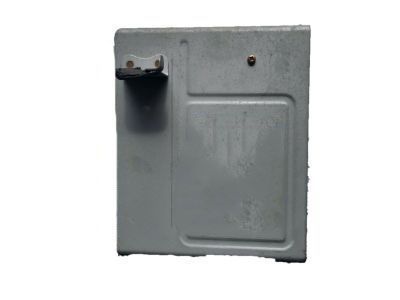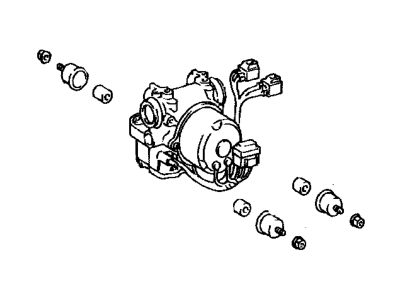

My Garage
My Account
Cart
Genuine Toyota Land Cruiser ABS Control Module
Anti Lock Brake Control Module- Select Vehicle by Model
- Select Vehicle by VIN
Select Vehicle by Model
orMake
Model
Year
Select Vehicle by VIN
For the most accurate results, select vehicle by your VIN (Vehicle Identification Number).
8 ABS Control Modules found
Toyota Land Cruiser Skid Control Computer Assembly
Part Number: 89540-60080$919.15 MSRP: $1178.85You Save: $259.70 (23%)Ships in 1-3 Business DaysToyota Land Cruiser Skid Control Computer Assembly
Part Number: 89540-60430$2257.68 MSRP: $2895.55You Save: $637.87 (23%)Ships in 1-3 Business DaysToyota Land Cruiser Skid Control Computer Assembly
Part Number: 89540-60440$2313.99 MSRP: $2967.78You Save: $653.79 (23%)Ships in 1-3 Business DaysToyota Land Cruiser Skid Control Computer Assembly
Part Number: 89540-60390$2257.68 MSRP: $2895.55You Save: $637.87 (23%)Ships in 1-3 Business DaysToyota Land Cruiser Skid Control Computer Assembly
Part Number: 89541-60020$538.83 MSRP: $690.45You Save: $151.62 (22%)Toyota Land Cruiser ACTUATOR Assembly, Brake
Part Number: 44510-60010$887.51 MSRP: $1138.26You Save: $250.75 (23%)
Toyota Land Cruiser ABS Control Module
If you are in demand for superior quality and affordable OEM Toyota Land Cruiser ABS Control Module, then shop with us! We own a wide range of the reduced-priced genuine Toyota Land Cruiser ABS Control Module. You can purchase in confidence as all parts come with a manufacturer's warranty. Any issues with our products? No need to worry as we have a hassle-free return policy to guide you every step of the way.
Toyota Land Cruiser ABS Control Module Parts Questions & Experts Answers
- Q: What is the function of the Anti-lock Brake System (ABS),ABS Control Module and Speed Sensor on Toyota Land Cruiser?A:The Anti-lock Brake System (ABS) available on 1993 and later 80 series vehicles is designed to maintain vehicle steerability, directional stability, and optimum deceleration under severe braking conditions and on most road surfaces by monitoring the rotational speed of each wheel and controlling brake line pressure to prevent wheel lock-up. The actuator assembly includes the master cylinder, an electric hydraulic pump, and four solenoid valves, with the pump providing hydraulic pressure to charge the reservoirs that supply pressure to the braking system. Speed sensors located at each wheel generate electrical pulsations to indicate wheel rotational speed, with front sensors mounted to the steering knuckle and rear sensors bolted to the axle carriers. The ABS computer, mounted under the dashboard, processes information from the wheel speed sensors to control hydraulic line pressure and monitors the system for faults, illuminating an "ABS" light on the dashboard if a problem develops. The ABS system control unit features a self-diagnosis system that detects sensor malfunctions and alerts the driver through the ABS warning light, which should turn off when the engine starts unless a malfunction is present. Diagnostic codes can be accessed by turning the ignition key to the ON position and using a jumper wire to connect specific terminals in the data link connector, with the ABS light indicating the number of flashes corresponding to the diagnostic code. The accompanying tables and charts provide details on the codes for various malfunctions, and after diagnosis, trouble codes can be cleared by depressing the brake pedal multiple times, followed by removing the jumper wire and reinstalling the connector cap, with further action recommended if issues persist.
Related Toyota Land Cruiser Parts
Browse by Year
2007 ABS Control Module 2006 ABS Control Module 2005 ABS Control Module 2004 ABS Control Module 2003 ABS Control Module 2002 ABS Control Module 2001 ABS Control Module 2000 ABS Control Module 1999 ABS Control Module 1998 ABS Control Module 1997 ABS Control Module 1996 ABS Control Module 1995 ABS Control Module 1994 ABS Control Module 1993 ABS Control Module 1992 ABS Control Module
















